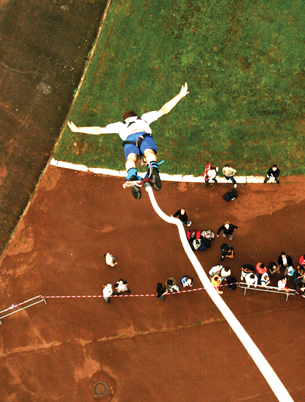Module 6—Work and Energy
Lesson 1—Work, Potential Energy, and Kinetic Energy
 Get Focused
Get Focused

© Stefan Ataman/shutterstock
The first modern bungee jump was made on April 1, 1959, from the 76-m Clifton Suspension Bridge in Bristol, England. The jumpers were arrested shortly after for performing what was considered a very dangerous stunt. Today, bungee jumping is commonplace, with thrill seekers leaping from crane platforms, hot-air balloons, tall buildings, and bridges.
Although there have been several million successful, safe jumps, there have been some fatalities and serious injuries. Leaping from tall buildings and bridges is inherently dangerous. But with the right equipment, careful calculations, and proper fittings, the risk of death and injury can be minimized.
The most common safety issues involve securing the elastic bungee to the jumper and correctly calculating the length of elastic bungee to be used, based on the weight of the jumper and the height of the jump. Failing to do either of these tasks correctly could lead to injury or death for the jumper.
You may correctly assume that a heavier jumper will require a shorter bungee cord since he or she will stretch the cord farther than someone who is lighter. But you will likely incorrectly assume that when the cord reaches its natural length (as if no mass were attached to it), the jumper will begin to slow down. In fact, the jumper will continue to speed up. To understand this, you need to consider the origin of the energy and the energy transfers that take place between the bungee cord and the jumper as he or she bobs up and down within Earth’s gravitational field.
In this lesson you will explore the following questions:
- What is work?
- What are gravitational potential energy and elastic potential energy?
- What is kinetic energy?
- How do gravitational potential energy, elastic potential energy, and kinetic energy interact?
 Module 6: Lesson 1 Assignments
Module 6: Lesson 1 Assignments
Your teacher-marked Module 6: Lesson 1 Assignment requires you to submit a response to the following:
- Try This—TR 1, TR 2, TR 3, TR 4, TR 5, TR 6, and TR 7
- Lab—LAB 1, LAB 2, LAB 3, LAB 4, and LAB 5
The other questions in this lesson are not marked by the teacher; however, you should still answer these questions. The Self-Check and Try This questions are placed in this lesson to help you review important information and build key concepts that may be applied in future lessons.
After a discussion with your teacher, you must decide what to do with the questions that are not part of your assignment. For example, you may decide to submit to your teacher the responses to Try This questions that are not marked. You should record the answers to all the questions in this lesson and place those answers in your course folder.